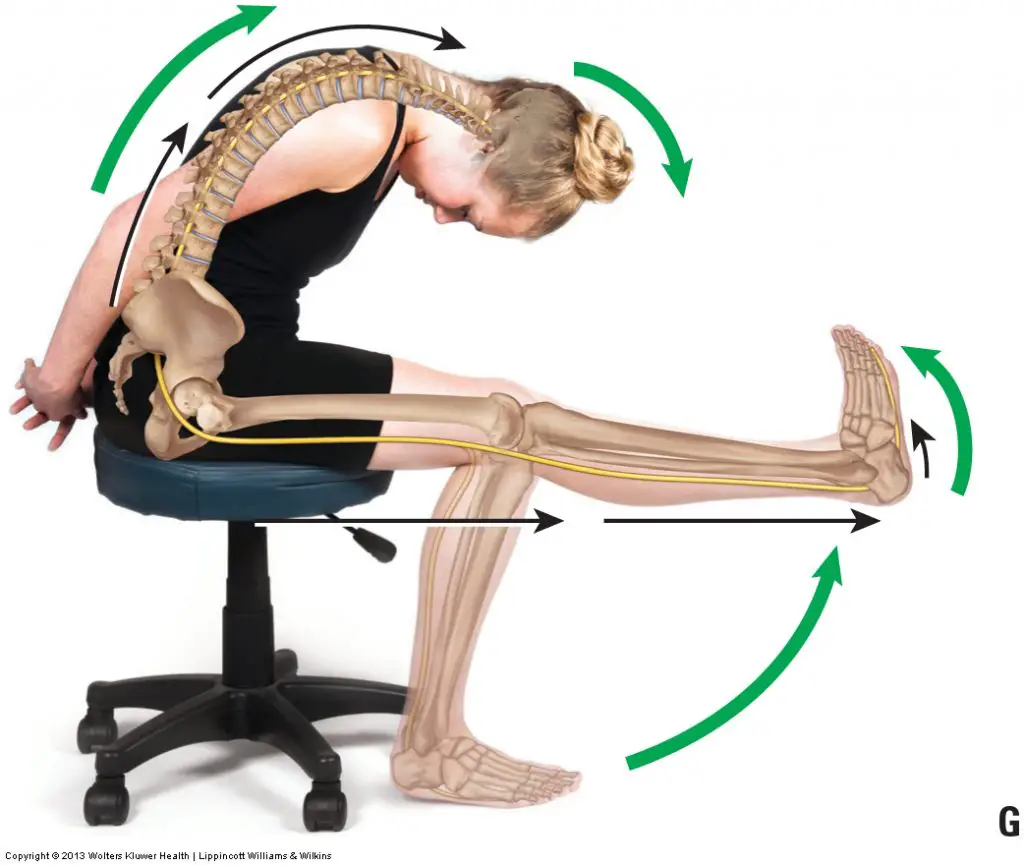Article reviewed and approved by Dr. Ibtissama Boukas, physician specializing in family medicine
The Slump test is a neural voltage test used by healthcare professionals to detect altered neurodynamics or tenderness in nerve tissue.
Procedure
- To begin the test, the patient should be seated with their hands behind their back.
- The first step is to ask the patient to sink down so as to maintain a slouched position (thoracolumbar flexion).
- If the position does not cause pain, the test is progressed by asking the patient to flex their neck by bringing their chin towards their chest.
- We then progress by asking the patient to extend his knee as much as possible (bringing the foot towards the sky). The next step is to do a dorsiflexion by bringing the toes towards you.
- If extending the knee is painful (or mimics spinal pain), the neural tension is released by asking the patient to bring their neck into extension while looking up at the sky. If the patient is able to extend their knee further when the neck is positioned in extension (or if they feel a decrease in pain), the test is considered positive.
Interpretation & translation services
During the slump test, the nerve structures located in the Spinal canal and the vertebral foramina are progressively subjected to maximum stretch.
You should know that the Slump test can be positive even in the absence of pathology. It is therefore important to compare the results with the opposite (healthy) side to better appreciate the neural tension. Similarly, overpressure can be applied during the various positions at the cervical or dorsal level to increase cervico-dorsal flexion (and thus increase nervous tension).
A positive slump test therefore indicates a possible neural lesion involving the dura mater or the sciatic nerve (for example a sciatica caused by a herniated disc). The patient may experience stretching, pain or any other neurological symptom in the lumbar region and/or lower limb.
The test results should ideally be interpreted in relation to the patient's characteristic pain, ie the symptoms he experiences on a daily basis and for which he consults.
References
- https://www.physio-pedia.com/Slump_Test
- https://en.wikipedia.org/wiki/Slump_test
- https://learnmuscles.com/blog/2017/08/14/special-orthopedic-assessment-tests-space-occupying-conditions-slump-test/
My name is Anas Boukas and I am a physiotherapist. My mission ? Helping people who are suffering before their pain worsens and becomes chronic. I am also of the opinion that an educated patient greatly increases their chances of recovery. This is why I created Healthforall Group, a network of medical sites, in association with several health professionals.
My journey:
Bachelor's and Master's degrees at the University of Montreal , Physiotherapist for CBI Health,
Physiotherapist for The International Physiotherapy Center


